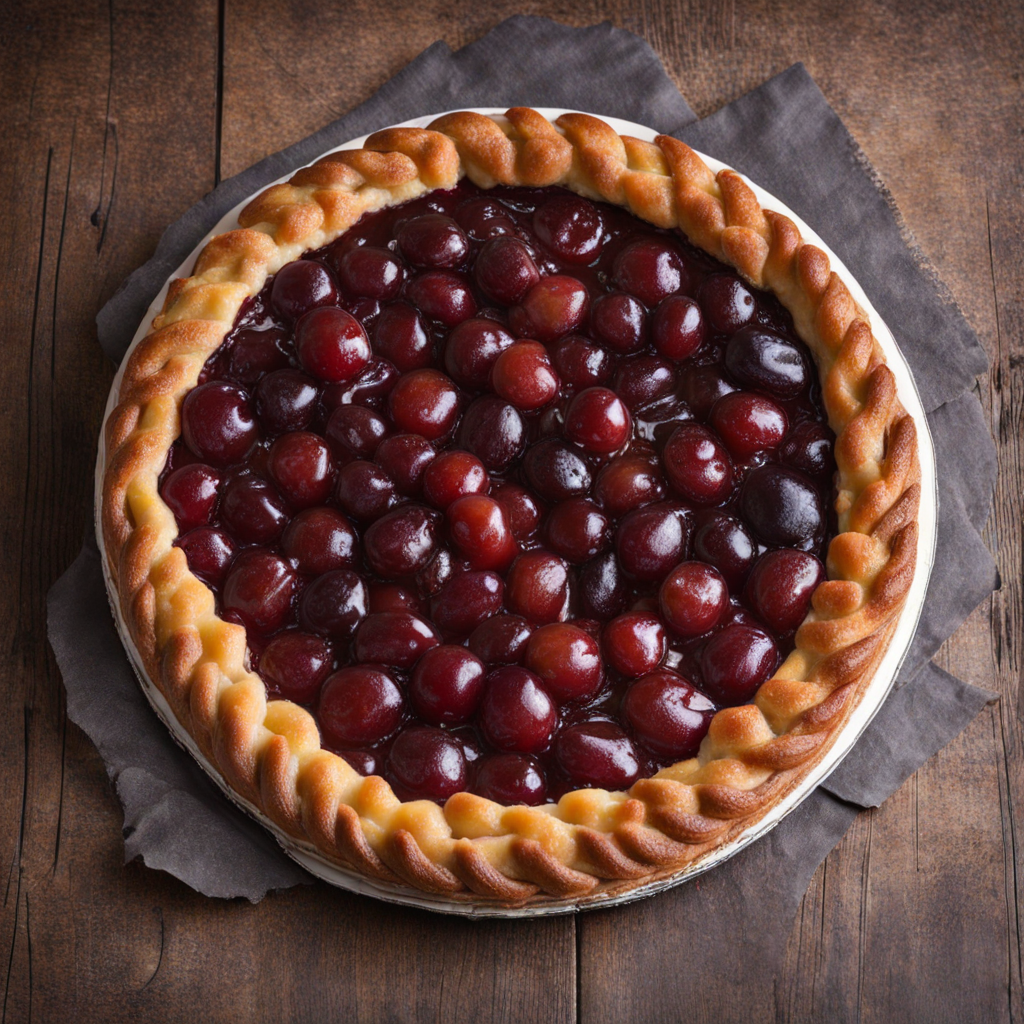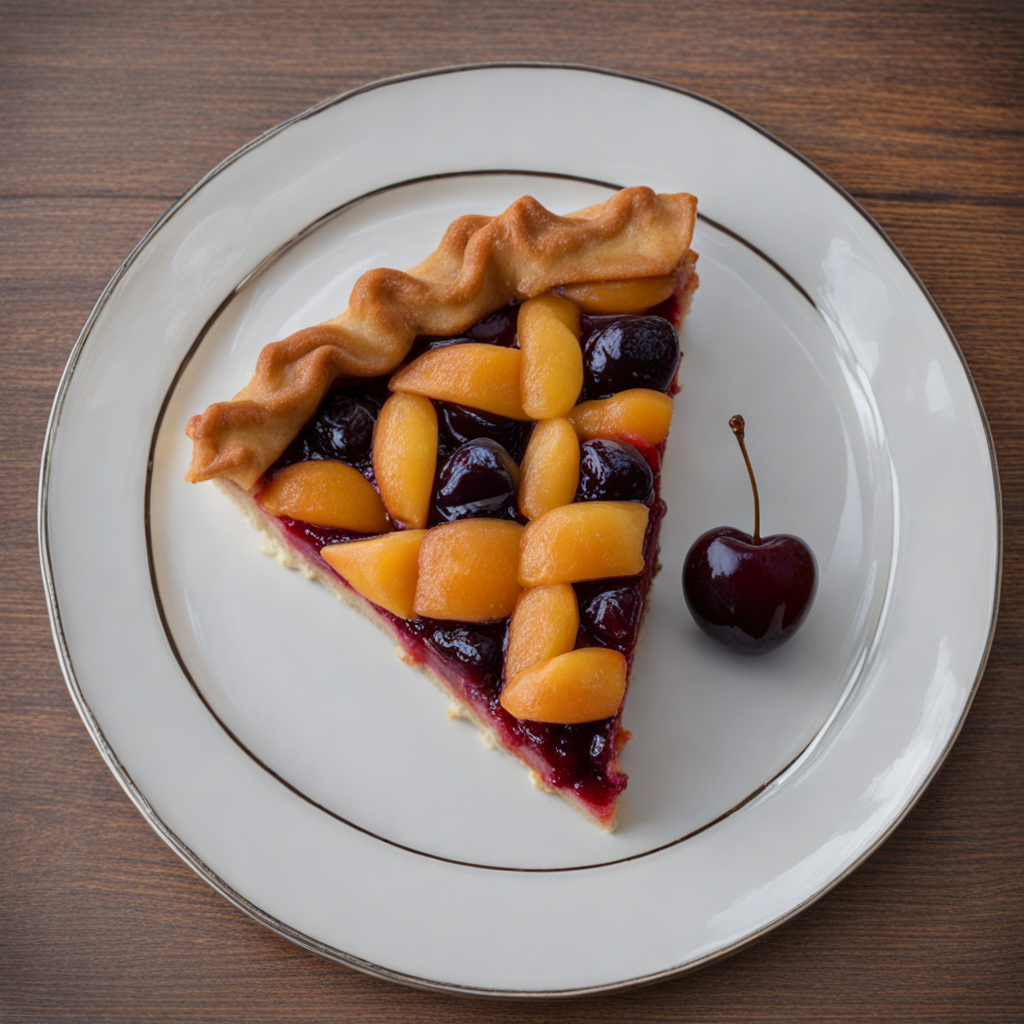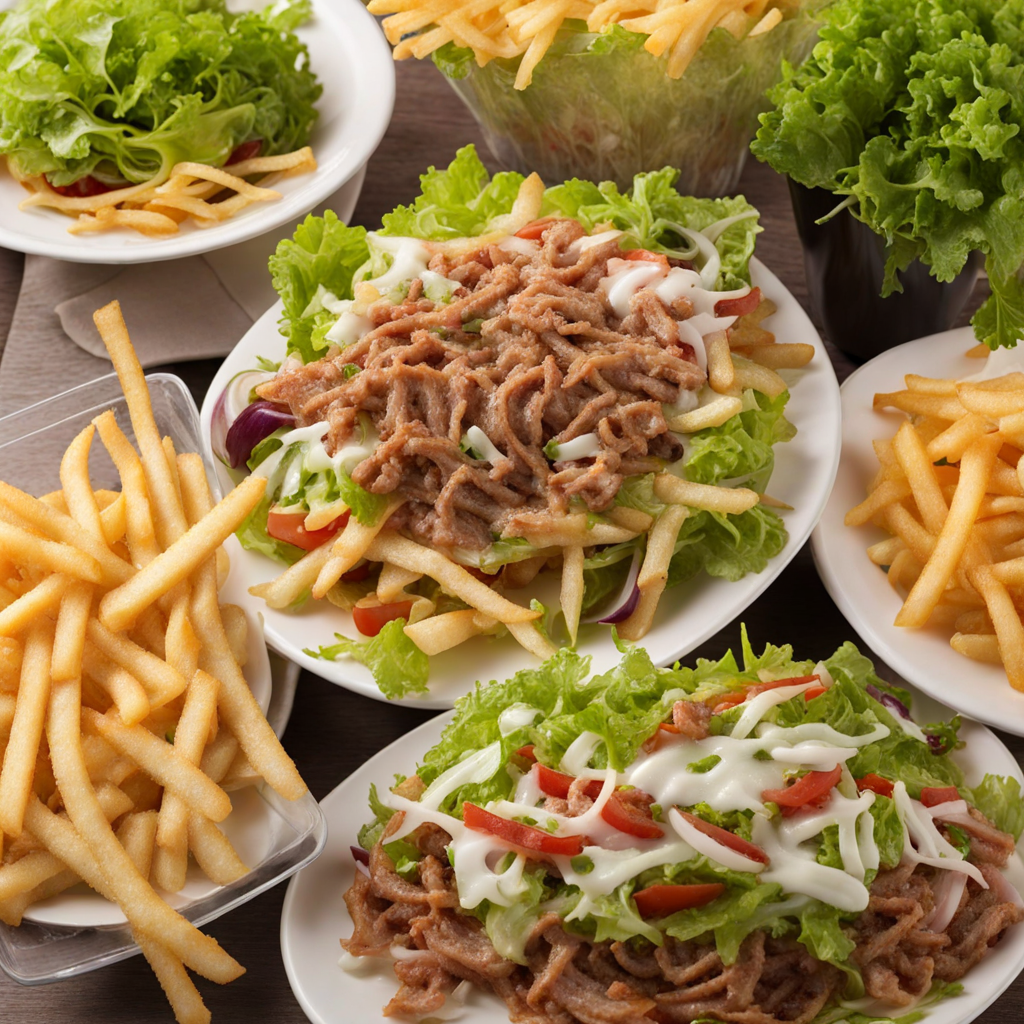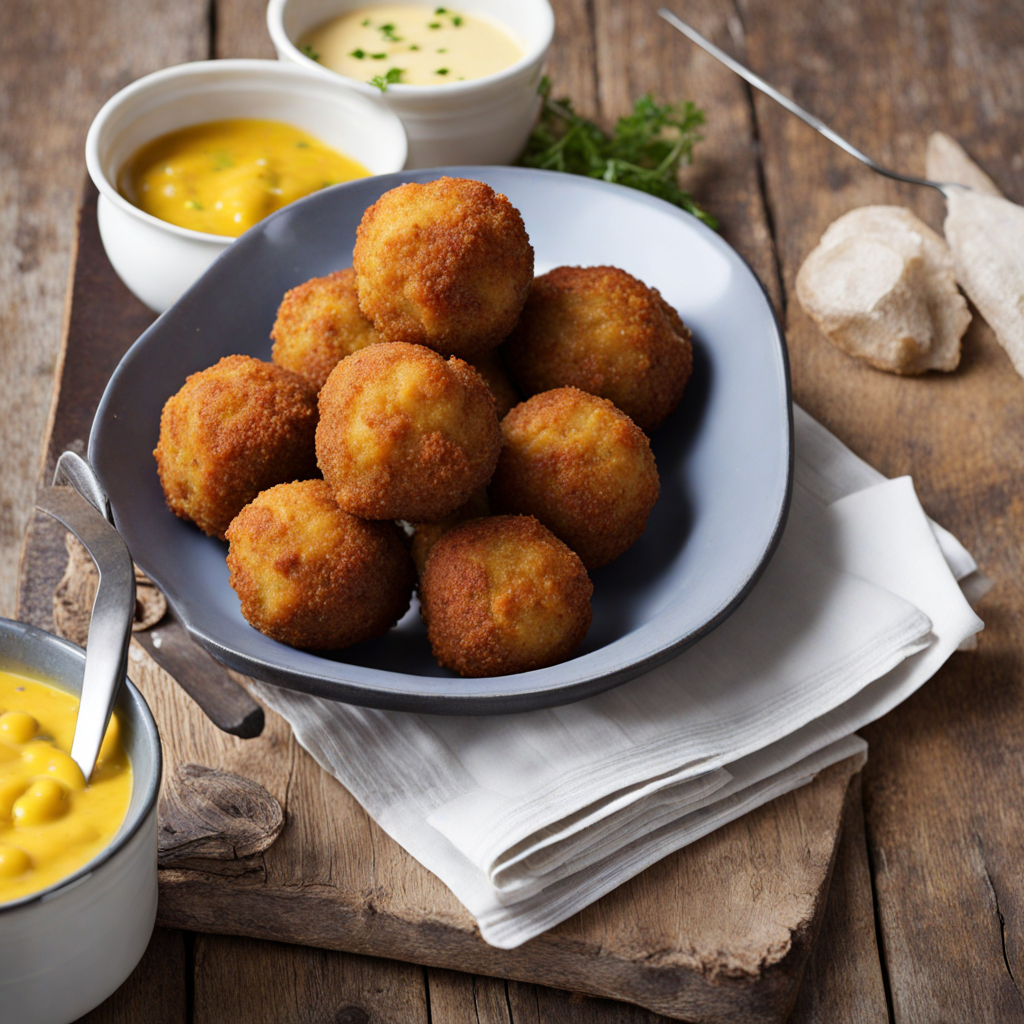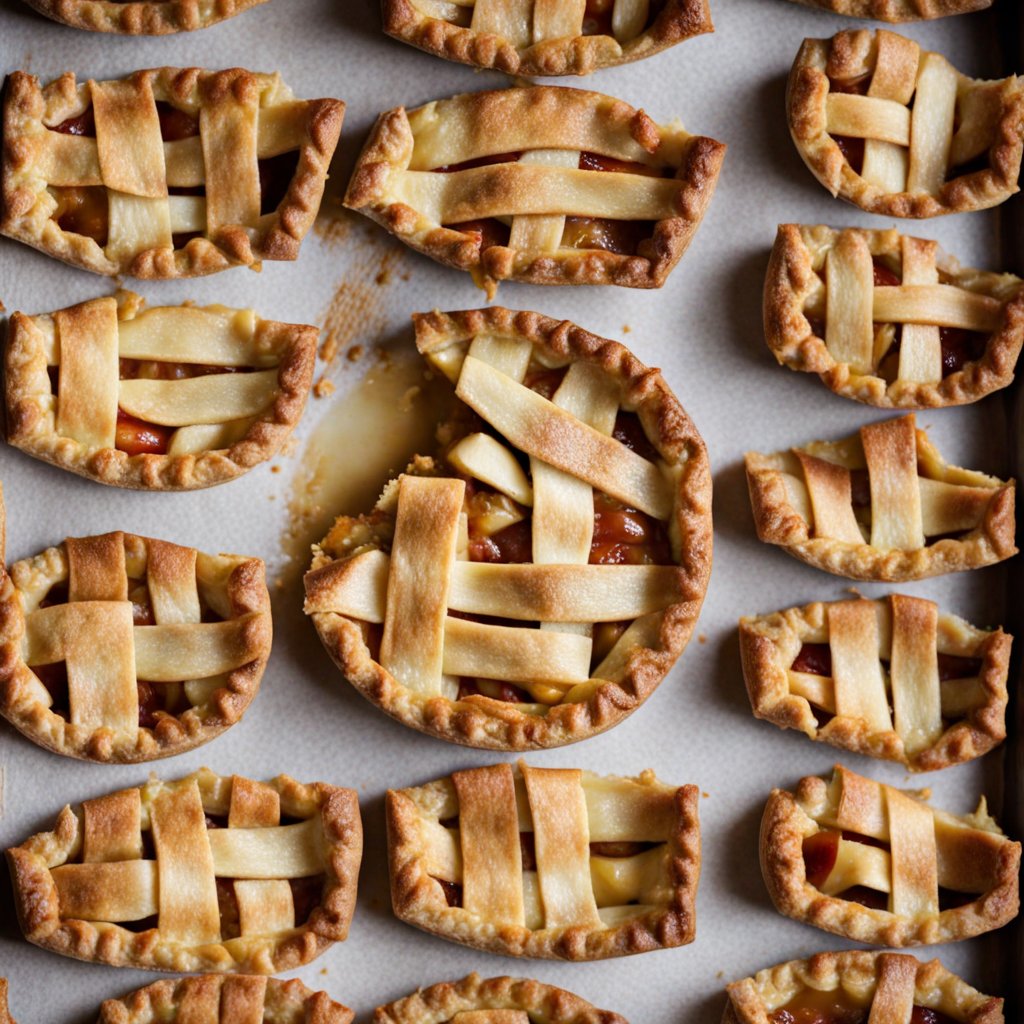Limburgse Vlaai
Limburgse Vlaai is a traditional pastry hailing from the Limburg region of the Netherlands, renowned for its delectable and diverse flavors. This sweet pie is characterized by its thin, buttery crust, which is often made from a rich yeasted dough that provides a light and airy texture. The crust is typically shaped into a round or square form, cradling a generous filling that can vary widely, ranging from fruits like cherries, apricots, and plums to creamy custards and even rice pudding. Each bite offers a delightful contrast between the crisp edge of the crust and the luscious filling, making it a beloved treat for both locals and visitors alike. The beauty of Limburgse Vlaai lies in its variety; there are numerous regional specialties that showcase the culinary creativity of the area. Some of the most popular fillings include the classic kersenvlaai, filled with sweet and tart cherries, or the rijstvlaai, which combines a creamy rice pudding with a hint of vanilla. Additionally, some versions are topped with a light dusting of powdered sugar or adorned with a lattice crust, adding an element of visual appeal to the already tempting dessert. This versatility means that there is a Limburgse Vlaai to suit almost any palate, whether you prefer fruity flavors or richer, creamier options. Enjoying Limburgse Vlaai is often a communal experience, typically served at gatherings, celebrations, or simply as a delightful afternoon treat with coffee or tea. The pie is usually sliced into generous wedges, inviting sharing and conversation among friends and family. As you savor each mouthful, you are not just tasting a pastry; you are experiencing a slice of Limburg’s cultural heritage, steeped in tradition and crafted with care. With its combination of textures and flavors, Limburgse Vlaai is sure to leave a lasting impression on anyone eager to explore the sweet side of Dutch cuisine.
How It Became This Dish
The Sweet History of Limburgse Vlaai: A Culinary Treasure from the Netherlands Nestled in the southern reaches of the Netherlands, the province of Limburg is renowned not only for its picturesque landscapes and rich cultural heritage but also for one of its most cherished culinary delights: Limburgse Vlaai. This traditional pie, with its flaky crust and delicious fillings, is more than just a dessert; it is a symbol of regional identity, community celebration, and a testament to the art of baking that has evolved over centuries. Origins of Limburgse Vlaai The roots of Limburgse Vlaai can be traced back to the medieval period, around the 13th century, when the region was part of the Holy Roman Empire. The name "vlaai" is derived from the Middle Dutch word "vlae," meaning "flat," which accurately describes its characteristic shape. The pie was initially a straightforward, rustic dish made from leftover dough and seasonal fruits, providing sustenance for farmers and laborers. The early vlaai was not the sweet, elaborate pastry we know today. Instead, it was a simple bread-like base topped with fruits such as apples, cherries, or plums, often sweetened with honey or sugar when available. The use of local ingredients reflected the agricultural practices of the region, where orchards flourished and fruit cultivation was a significant part of life. As Limburg's economy grew, so too did the complexity of the vlaai. By the 16th and 17th centuries, sugar became more accessible due to trade routes established through Dutch colonial expansion. This allowed for the development of sweeter varieties, as bakers began to experiment with new ingredients and techniques. The addition of spices like cinnamon and nutmeg, along with the introduction of cream and custard fillings, transformed the humble vlaai into a more sophisticated dessert. Cultural Significance of Limburgse Vlaai Limburgse Vlaai holds a special place in the hearts of the Limburgers. It is not merely a treat but a centerpiece for celebrations, gatherings, and traditions. The pie is often served at birthdays, weddings, and local festivals, symbolizing hospitality and the joy of sharing. The act of baking vlaai is typically a communal endeavor, with families and friends coming together to prepare the dish, reinforcing social bonds and cultural heritage. One of the most significant aspects of Limburgse Vlaai is its regional variation. Each town and village boasts its own recipe, often passed down through generations. This local pride fuels a friendly rivalry, with bakers competing to create the best vlaai. The most popular fillings include fruit, such as cherries, apples, and apricots, but there are also savory variations, featuring ingredients like cheese or custard. The versatility of vlaai allows it to be enjoyed year-round, showcasing the seasonal bounty of Limburg's orchards. The popularity of Limburgse Vlaai extends beyond the borders of the province, earning recognition throughout the Netherlands and even internationally. In 2007, the pie was awarded the status of "Protected Geographical Indication" (PGI) by the European Union, ensuring that only vlaai produced in Limburg can carry the name. This designation highlights the cultural significance of the dish and the importance of preserving traditional baking methods. Development Over Time As with many traditional foods, Limburgse Vlaai has seen changes in its preparation and presentation over the years. The 19th century marked a turning point as industrialization brought new technologies to the baking process. The introduction of baking powder revolutionized the way vlaai was made, resulting in a lighter and fluffier crust. Bakeries began to pop up in towns and cities, making vlaai more accessible to the public. The 20th century saw the rise of commercial bakeries and mass production, which, while convenient, threatened to overshadow the artisanal methods of traditional baking. However, a resurgence of interest in local, homemade foods has sparked a revival of traditional Limburgse Vlaai. Today, many bakeries prioritize quality ingredients and time-honored techniques, ensuring that the authentic taste of vlaai remains alive. In recent years, Limburgse Vlaai has also found its way into modern culinary trends. Creative bakers are experimenting with unconventional fillings, incorporating flavors inspired by global cuisine. However, the classic vlaai, with its fruit fillings and crumbly crust, remains a beloved staple, embodying the essence of Limburg. A Slice of Limburg's Identity Limburgse Vlaai is more than a delicious dessert; it is a symbol of the region's identity and a celebration of its agricultural heritage. The pie has become a culinary ambassador for Limburg, representing the province's unique history and culture on both a national and international stage. As people gather to share a slice of vlaai, they partake in a tradition that connects generations, honors the past, and looks toward the future. In the heart of Limburg, the scent of freshly baked vlaai wafts through the air, inviting locals and visitors alike to indulge in a slice of history. Whether enjoyed on a sunny terrace, at a festive family gathering, or during a quiet afternoon, Limburgse Vlaai continues to evoke feelings of warmth, nostalgia, and community. Its enduring legacy is a testament to the power of food to bring people together and preserve cultural heritage. In conclusion, Limburgse Vlaai is a culinary gem that reflects the region's history, culture, and community spirit. From its humble beginnings as a rustic pie to its status as a beloved symbol of Limburg, the evolution of vlaai showcases the adaptability and creativity of its bakers. As we savor each bite, we are reminded of the stories and traditions woven into this delightful dish, ensuring that Limburgse Vlaai will continue to be cherished for generations to come.
You may like
Discover local flavors from Netherlands


